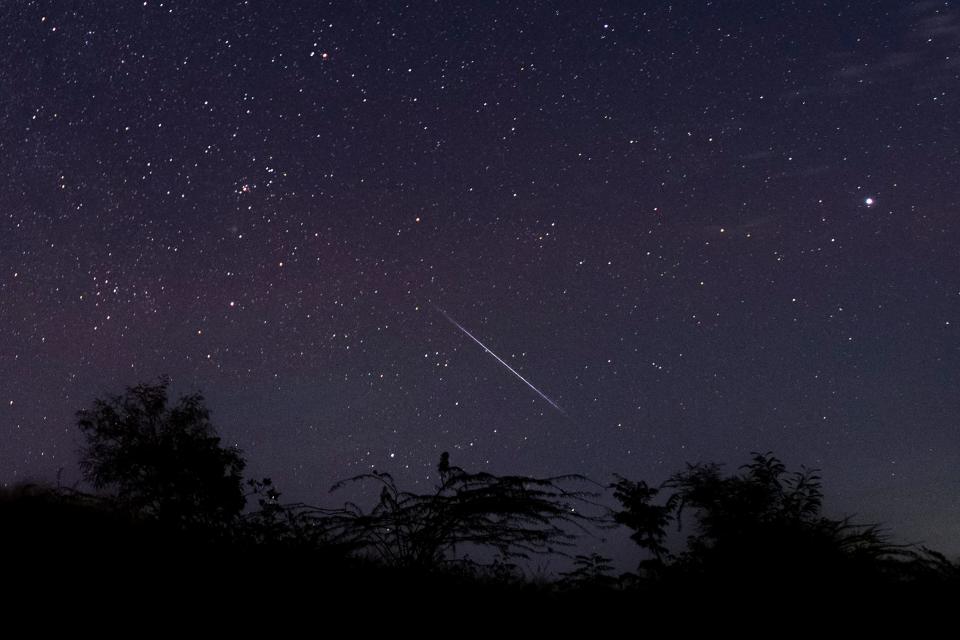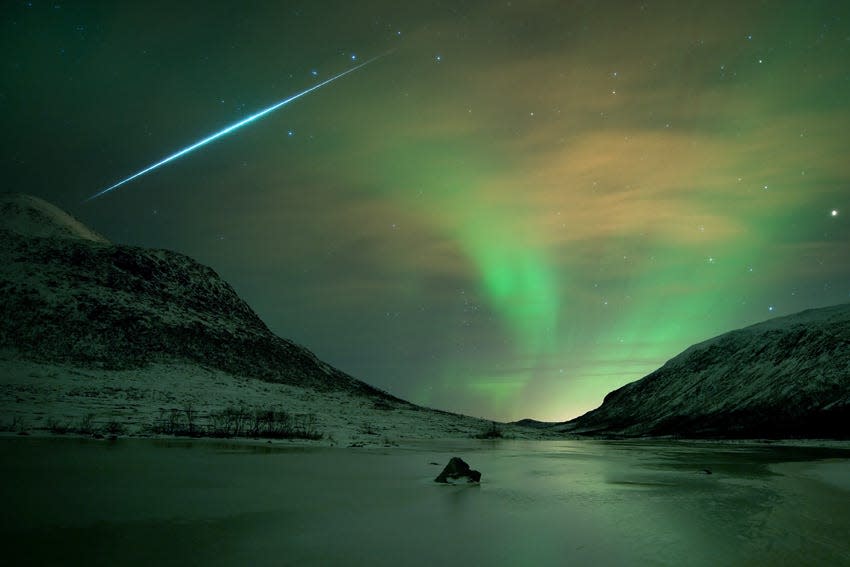The best time to see the Geminid meteor shower is this week. Here's how to watch.
The Perseids of August may be the most famous, but for some of the most faithful stargazers, only one meteor shower rules supreme.
And it's peaking this week.
The Geminid meteor shower, which has been active for much of December, is saving its most spectacular celestial activity for Wednesday and Thursday. The Geminids may not be active during the warm, inviting summertime like its Perseid counterpart, but many astronomers promise a dazzling cosmic show is in store for those willing to brave chilly winter conditions.
Considered one of the strongest and most consistent meteor showers, peak Geminids could feature as many as 120 meteor trails per hour whizzing across the night sky, according NASA.
“Most meteors appear to be colorless or white, however the Geminids appear with a greenish hue," Bill Cooke, a NASA astronomer, said in a statement. "They’re pretty meteors."
One-of-a-kind eclipse: Asteroid Leona to pass in front of star Betelgeuse. Who will see it?
When does the Geminid meteor shower peak?

Though the Geminids will be active through Dec. 24, peak activity should begin Wednesday night and stretch into Thursday morning.
Named for the constellation Gemini, the shower has a reputation for being bright and intensely colored, capable of falling slowly and even producing fireballs, according to the American Meteor Society. Many of the shooting stars appear as yellowish streaks.
Because of minimal moonlight, those in rural areas could see more than one meteor trail a minute this year, according to NASA.
How can I see the Geminids?

Forecasted conditions should make this year a perfect time to catch the Geminids in action.
The moon, which enters a new phase beginning Tuesday, will be a thin crescent, setting around 5 p.m. EST Wednesday in the west-southwest. That means the moonless sky will be dark much of the night, according to Space.com.
A clear sky shrouded in darkness is all stargazers need to witness a meteor shower. But considering the time of year, you may also want to consider wearing warm outerwear and bringing blankets as you gaze upward and wait patiently for a shooting star.
Though the shower is best viewed during the night and predawn hours, activity typically begins around 9 or 10 p.m., according to NASA. What's more, the shower is visible across the globe.
Don't worry about looking in any particular direction, either, NASA says – Geminid meteors can generally be seen all over the sky.
Depending on the meteor’s chemical composition, the meteor will emit different colors when burned in the Earth’s atmosphere. For instance, oxygen, magnesium, and nickel usually produce green meteors.
What causes the Geminid meteor shower?
Meteor showers occur when Earth passes through debris trails left by comets and other space objects. The debris that collides with our atmosphere disintegrates, creating fiery and colorful streaks in the sky, NASA said.
Most meteor showers, including the Perseids, originate from passing comets. But what makes the Geminids different is that they originate from an asteroid.
Asteroid 3200 Phaethon, to be exact.
Discovered in 1983, 3200 Phaethon is believed to have broken apart under the stresses of the asteroid's rotation, which caused it to eject billions of tons of dust and debris into the solar system, according to NASA.
The small asteroid, which is more than 3 miles in diameter, approaches so close to the sun that it was named for the son of the sun-god Helios, who lost control of his father's chariot and set the Earth ablaze in Greek mythology.
Eric Lagatta covers breaking and trending news for USA TODAY. Reach him at [email protected]
This article originally appeared on USA TODAY: Geminid meteor shower: Peak times and how you can get the best view
Solve the daily Crossword

